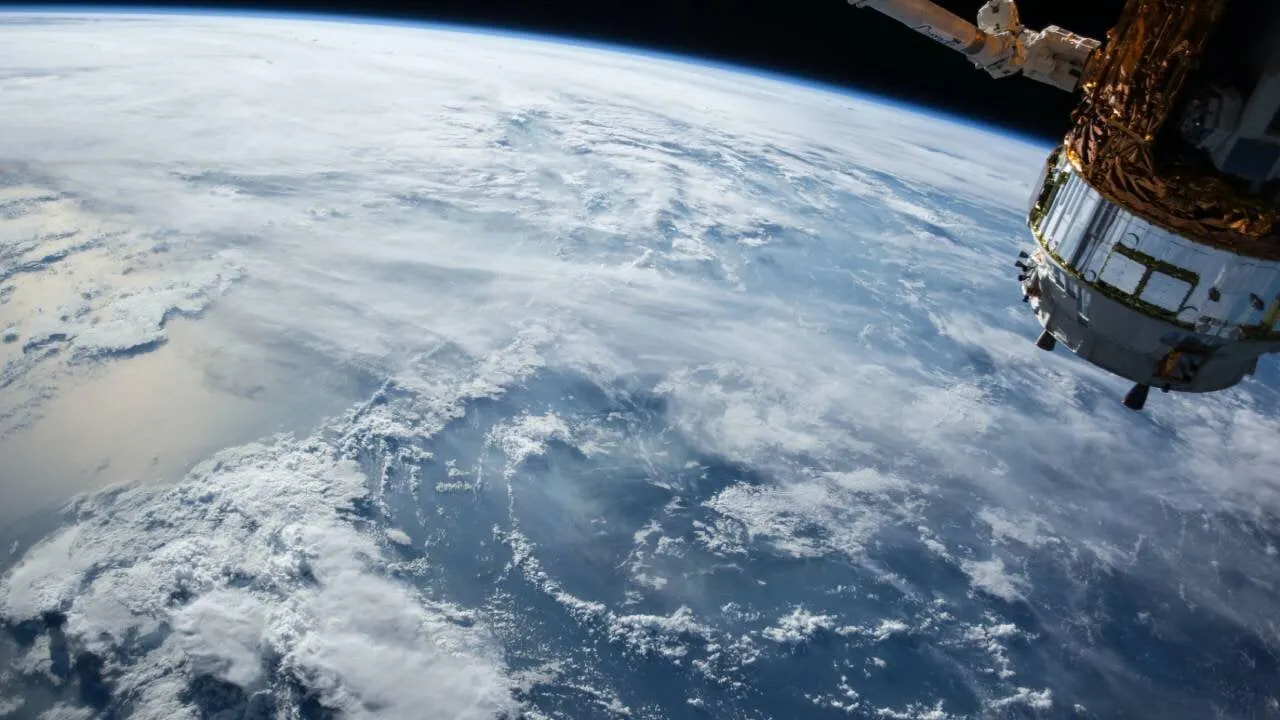Signs of Life on Exoplanet K2-18b: A New Era in Space Exploration

The discovery of signs of life on the exoplanet K2-18b has captivated scientists and space enthusiasts, marking a significant breakthrough in the search for extraterrestrial life. This exoplanet, located in the constellation Leo and approximately 120 light-years away, has recently garnered much attention due to the detection of water vapor in its atmosphere. As water is one of the key ingredients for life as we know it, this finding raises the exciting possibility that K2-18b could support life.
The evidence is based on data from NASA’s Hubble Space Telescope, which analyzed the composition of the exoplanet’s atmosphere. The detection of water vapor and other chemicals such as methane and carbon dioxide suggests that the conditions on K2-18b may be suitable for life, similar to those on Earth. This discovery aligns with previous findings about exoplanets located in the “habitable zone,” where liquid water might exist, making them prime candidates for the presence of life.
Exoplanet K2-18b and the Search for Extraterrestrial Life
Exoplanet K2-18b has become a focal point in the search for extraterrestrial life. Scientists have long theorized that life beyond Earth could exist, but finding definitive proof has proven elusive. The discovery on K2-18b provides the most promising evidence that we are not alone in the universe. While this does not necessarily confirm the presence of life on the exoplanet, it opens up new avenues for exploration and research.
The exoplanet’s position in its star’s habitable zone is one of the most compelling reasons for its potential. The habitable zone, or “Goldilocks zone,” is the region around a star where conditions are just right for liquid water to exist on a planet’s surface. This is essential for supporting life, as water is crucial for many biological processes. The discovery of water vapor on K2-18b suggests that it may have the necessary conditions for life to thrive.
The Scientific Significance of Life Signs on Exoplanet K2-18b
The scientific implications of the signs of life on exoplanet K2-18b are immense. This discovery could lead to a deeper understanding of how life could emerge and survive on other planets. If K2-18b does indeed have the potential for life, it could serve as a model for studying the origins of life on Earth. The presence of water vapor and the right atmospheric conditions indicate that K2-18b shares specific characteristics with Earth, which may not be unique to our planet.
Scientists are now focusing on analyzing the atmospheric composition in more detail. Instruments like the James Webb Space Telescope, launched to study distant exoplanets, could provide more insights into K2-18b’s atmosphere. By detecting specific biomarkers—such as oxygen, nitrogen, or methane—scientists can gauge whether the planet’s conditions are truly conducive to supporting life.
Exploring Future Missions to K2-18b
Given the exciting possibilities, future missions may be planned to study K2-18b more closely. Advances in space technology and telescopic instruments will allow astronomers to gather more data about the exoplanet’s atmosphere and surface. These missions could also include sending probes or spacecraft to collect samples, though that is still far in the future. The scientific community is eagerly anticipating what further research will reveal.
Moreover, the discovery of signs of life on K2-18b underscores the importance of space exploration and the need for continued investment in space technologies. The ability to study distant worlds is crucial for understanding our place in the universe and answering one of humanity’s oldest questions: Are we alone?
The Broader Search for Extraterrestrial Life
While K2-18b is currently one of the most promising candidates for harboring life, the search for extraterrestrial life is far from over. Other exoplanets, particularly those in the habitable zones of their stars, continue to be explored for similar signs. The discovery of life on K2-18b could spark a revolution in approaching the search for extraterrestrial life, leading to more focused efforts and advanced technologies to discover and understand distant, Earth-like planets.
Scientists are particularly interested in studying exoplanets with atmospheres similar to Earth’s. Identifying water vapor on K2-18b could help guide the search for other exoplanets with comparable environments. This search could eventually lead to the discovery of life beyond Earth, fundamentally changing our understanding of biology and the universe.
The discovery of potential signs of life on exoplanet K2-18b is a momentous achievement in astronomy and the search for extraterrestrial life. While the presence of water vapor alone does not confirm the existence of life, it suggests that the planet could possess the right conditions for life to develop. This discovery, combined with the upcoming advancements in space exploration, provides a strong foundation for further research and exploration of exoplanets in the habitable zone. K2-18b has become a key focus in humanity’s quest to answer one of the most profound questions: Is there life beyond Earth?
By continuing to study exoplanets like K2-18b, scientists are moving closer to unlocking the mysteries of the universe and finding signs of life in places once uninhabitable. The journey has just begun, and the future of space exploration looks brighter than ever.
About the Author
DURU SUNNY-GEORGE
Administrator
Duru Sunny George is a Media Practitioner | Journalist | Cinematographer | Photographer | Lecturer - popularly known as DSG, is a versatile media entrepreneur and educator. He is the Founder & CEO of DSG STUDIOS, DSG HERALD NEWS, and DSG RADIO, leading platforms in journalism, photography, cinematography, and digital broadcasting.






